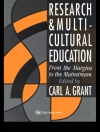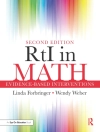Based on fieldwork conducted between 2001-2008 in urban East Africa, this book explores who the patients, practitioners and paraprofessionals doing Chinese medicine were in this early period of renewed China-Africa relations. Rather than taking recourse to the ‘placebo effect’, the author explains through the spatialities and materialities of the medical procedures provided why - apart from purchasing the Chinese antimalarial called Artemisinin - locals would try out their ‘alternatively modern’ formulas for treating a wide range of post-colonial disorders and seek their sexual enhancement medicines.
Inhoudsopgave
List of Illustrations
A Note on Transcription
Introduction
Part I:Moving through the Practico-Sensory Realm of Space
Chapter 1. Spatial Textures of the Clinical Encounter
Chapter 2. Misunderstandings, and the Spaces They Create
Part II: Emplacement, Emplotment, ‘Empotment’
Chapter 3. Patients, Practitioners, and Their Pots
Chapter 4. The Patients
Chapter 5. The Practitioners
Chapter 6. The Pots: Orientations
Part III: Pots, ‘Pots’ and Pots
Chapter 7. What Is in a ‘Pot’? Industrially-Produced Chinese Formula Medicines
Chapter 8. What Makes a Pot Efficacious? Social Distance, Exotic Techniques and Potencies beyond Them
Chapter 9. ‘The Chinese Antimalarial’ as ‘Pot’ and Pot
Conclusion
Index
Over de auteur
Elisabeth Hsu is Professor of Anthropology at the School of Anthropology and Museum Ethnography, University of Oxford and Fellow of Green Templeton College. She has published widely on medical anthropology, the history of science, technology and medicine in China and other fields.












